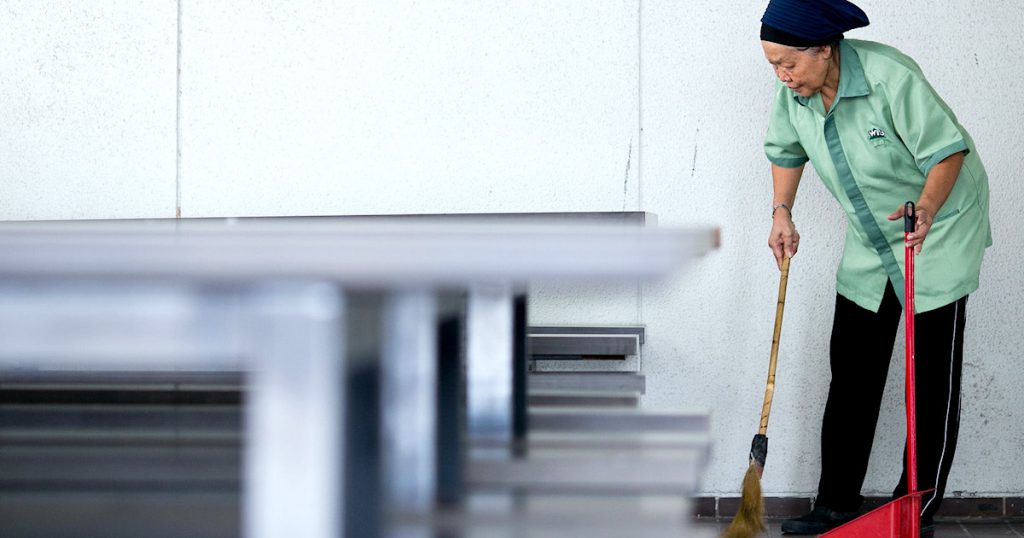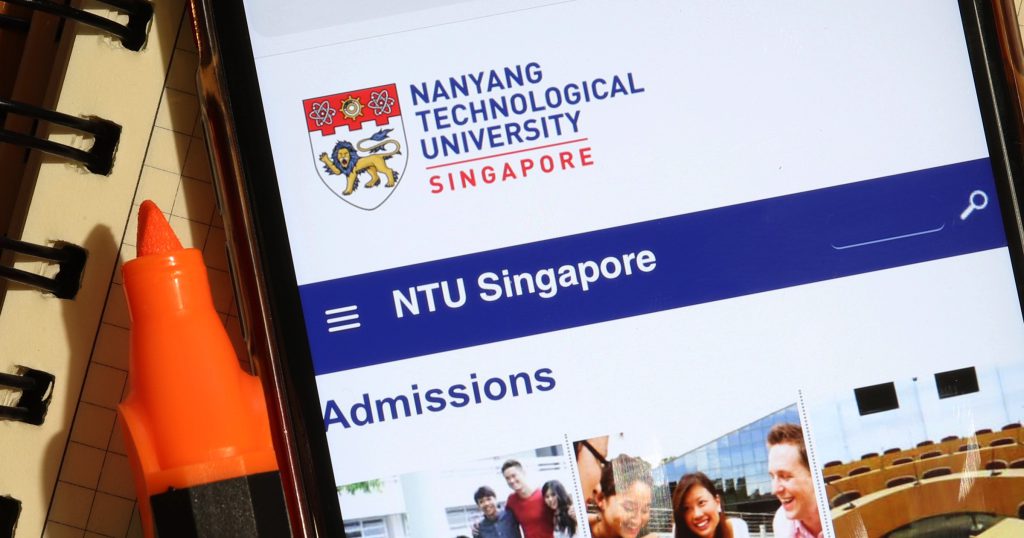A sad story about the struggles of an elderly cleaner who earns only S$20/day has gone viral on social media, racking up about 20,000 shares.
Netizen Meng Shuen Koh had shared his encounter with the old lady on Facebook on July 27, though the post has since been taken down.
In a series of Instagram Stories, Koh wrote that the 82-year-old — who was referred to as “Ah Umm” in the post — wanted to get to Sentosa to find a higher-paying cleaning job (S$10/hour) as her current job at Tampines Hub pays barely enough to cover her meals and transport expenses.
She also revealed to him that she has had four major heart surgeries, in which each surgery would cost her about S$40,000. The old lady noted that she had to sell her house in order to pay for the exorbitant surgeries fees.
Her husband has passed away, and her only son died during an accident while serving National Service.
She claimed that the Government has promised to give compensation for her late son’s death (payout of S$300 per month) but has yet to receive “one cent” from the Government till today.

In the post, Koh went on to question Singapore’s minimum wage model, or rather, the lack of it. Calling the S$5/hour a “slave wage”, he said that nobody should be working menial labour at that rate.
Although the Ministry of Social and Family Development (MSF) has issued a clarification regarding the post, it’s still worth discussing the feasibility of a minimum wage model in Singapore.
Moreover, several opposition parties such as the Workers’ Party, Peoples Voice Party, National Solidarity Party and Reform Party have also pushed for a minimum wage or living wage policy in their GE 2020 manifestos.
Why Is There No Minimum Wage In S’pore?
More than 90 per cent of the countries in the world have already adopted minimum wage, so why isn’t Singapore doing the same?
Prime Minister Lee Hsien Loong addressed this perennial issue in his online election rally on July 6, saying that calls for a minimum wage or a universal basic income are “fashionable peacetime slogans, not serious wartime plans”, referring to the Covid-19 crisis.
He said that a minimum wage would add to employers’ costs and pressure them to let even more workers go.
Think about it this way: who will pay for this increase in wages?
An increase in wages will increase the costs of operation for businesses in Singapore if they maintain the same number of employees.
Businesses could either offset these costs by absorbing the costs themselves, or by passing the costs on to the customers. This means that by imposing a minimum wage model, Singaporeans could see an increase in cost of goods and services.

The second concern is that, with higher wages, businesses might not be able to afford some staff and hence let them go to keep cost of operations down. This could then lead to an increase in unemployment.
Among other things, the Government has also argued that having such a system would adversely affect the Singapore economy’s competitiveness.
For example, PM Lee said at the inaugural DBS Asia Leadership Dialogue in July 2013 that a minimum wage will not solve the problems of low-wage workers in Singapore.
My belief has been that a minimum wage is not going to solve the problem.
If it is modest, it won’t do harm, neither will it do a lot of good. If it is high, well, then it is going to cause costs to employers and it is going to cause unemployment to the low-wage workers. So you are not really solving his problem, you are just going to transfer it somewhere else.
– PM Lee in a DBS Asia Leadership Dialogue in 2013
Minimum wage hardly bodes well for low-wage workers or the economy, particularly in an export-reliant city like Singapore, where natural resources are minimal.
While the sole purpose of this model is to serve low-wage workers, it could ultimately hurt them instead.
Progressive Wage Model Is A “Ladder”
Rather than set a minimum benchmark, Singapore embraces a Progressive Wage Model (PWM) instead.
First rolled out in 2012 by the National Trades Union Congress, the PWM mandates that workers be paid a basic monthly wage based on the level of skill they possess.
The goal of the PWM is to raise wages for the lowest 10 to 20 per cent of Singaporean wage earners.
PWM has been introduced in the cleaning, landscape and security sectors so far, though the Government intends to expand it to the lift maintenance and bus industries by the end of this year, and eventually to all sectors.
For example, when it comes to wages for Singaporeans and PRs in the cleaning sector, PWM states that from 1 July 2020 onwards, general cleaners working in office, commercial and F&B establishments need to earn a basic salary of at least S$1,236 each month.

For those working in Conservancy (e.g. town councils), this is higher with basic wage being at least S$1,442.
Senior Minister Tharman Shanmugaratnam said in a live talk show on July 7 that PWM is a ladder of which a minimum wage would only be the first rung.
Under PWM, workers are encouraged to move up a “ladder” of increasing wages, by acquiring more skills or taking on more responsibilities.
This makes it is a more sustainable alternative as it is not just a payout, but also a ladder for a continued career.

In some sectors, they value people to a different degree so they are willing to pay more. If we had a flat minimum wage that cuts across all sectors, then in some sectors where the companies are actually able to pay more, they won’t.
What we want to do is much more than the minimum. In Singapore, we ask ourselves the question – are (the workers) happy with just earning the minimum, or actually they would prefer the opportunity to move up, to progress?
– Manpower Minister Josephine Teo in a “Straight Talk with PAP” session on July 1
She went on to cite the example of top-performing security officers who could rise up to become security consultants.
In 2018, Mrs Teo also recalled that during her visit to Hong Kong, soon after a minimum wage was implemented, she learnt of an elderly condominium security officer who was displaced by a younger person.
The building management had “expressed a preference” for the younger employee for the same minimum wage, she said.
Why Fix What’s Not Broken?
The PWM is working as wages have risen over time.
Income has grown by up to 36 per cent for cleaners, security guards and landscape maintenance workers between 2014 and 2019, though it’s fair to note that the growth is low and slow.
According to Mr Tharman, low-wage workers in the 20th percentile of the income ladder have seen an increase in wages of close to 40 per cent in real terms over the last 10 years.
The pay of these workers used to be about $1,500 a decade ago, but is now $2,500. Adjusted for inflation, it is close to a 40 per cent increase.
He added that the Government also provides Workfare and the Special Employment Credit (SEC) — a wage subsidy for employers of older workers — which come up to an extra 40 per cent on top of what employers pay the workers.
For instance, a 65-year-old cleaner whose basic monthly income was $1,500 would receive another $333 under Workfare, and another $120 under the SEC.
They don’t even need to apply — this is automatic, based on their CPF payments.
Besides Workfare and the Special Employment Credit scheme, these workers also benefit from the Workfare Skills Support Scheme, and Silver Support Scheme.
It’s imperative to note that in tough times like the current pandemic situation, no minimum wage or living wage system can help low-wage workers.
When there is no work, there is no salary, there is no minimum wage to talk about when firms are unable to pay their low-wage workers.
This is why the Government’s initiatives complement the PWM. Unlike minimum wage or living wage, Singapore takes a multi-layered approach to support our low-wage workers and which is effective especially in these times of needs.
Food For Thought: Considerations To Take Note Of
If we introduce a minimum wage law in Singapore, small and medium-sized enterprises (SMEs) may be the most affected. Many of these sectors employ those who are very likely to be put on a minimum wage.
We should also bear in mind that Singapore has no unemployment benefits scheme, and that our social safety nets are employment-based.
Are we ready to deal with higher social welfare needs that come with higher unemployment?
If we introduce a minimum wage law in Singapore, are we prepared to introduce an unemployment benefits scheme like what most countries have done?
If we have an unemployment benefits scheme, our Workfare Income Supplement scheme — which provides additional financial support to those who earn low incomes — may not be attractive anymore as workers will be able to choose between unemployment benefits and Workfare, eroding our national work ethic.
And if we introduce a minimum wage law, would it apply equally to citizens, permanent residents and foreigners?
So many of our low-income jobs in Singapore are taken up by foreign workers because they’re not what most Singaporeans want to do.
Good luck trying to deviate from international standards set by the International Labour Organisation (ILO) to justify paying only locals a minimum wage.
Even if we find cause to do so, there’s no stopping employers who are more likely to employ permanent residents and foreigners who now cost less than a Singapore worker.
Featured Image Credit: NTUC This Week












